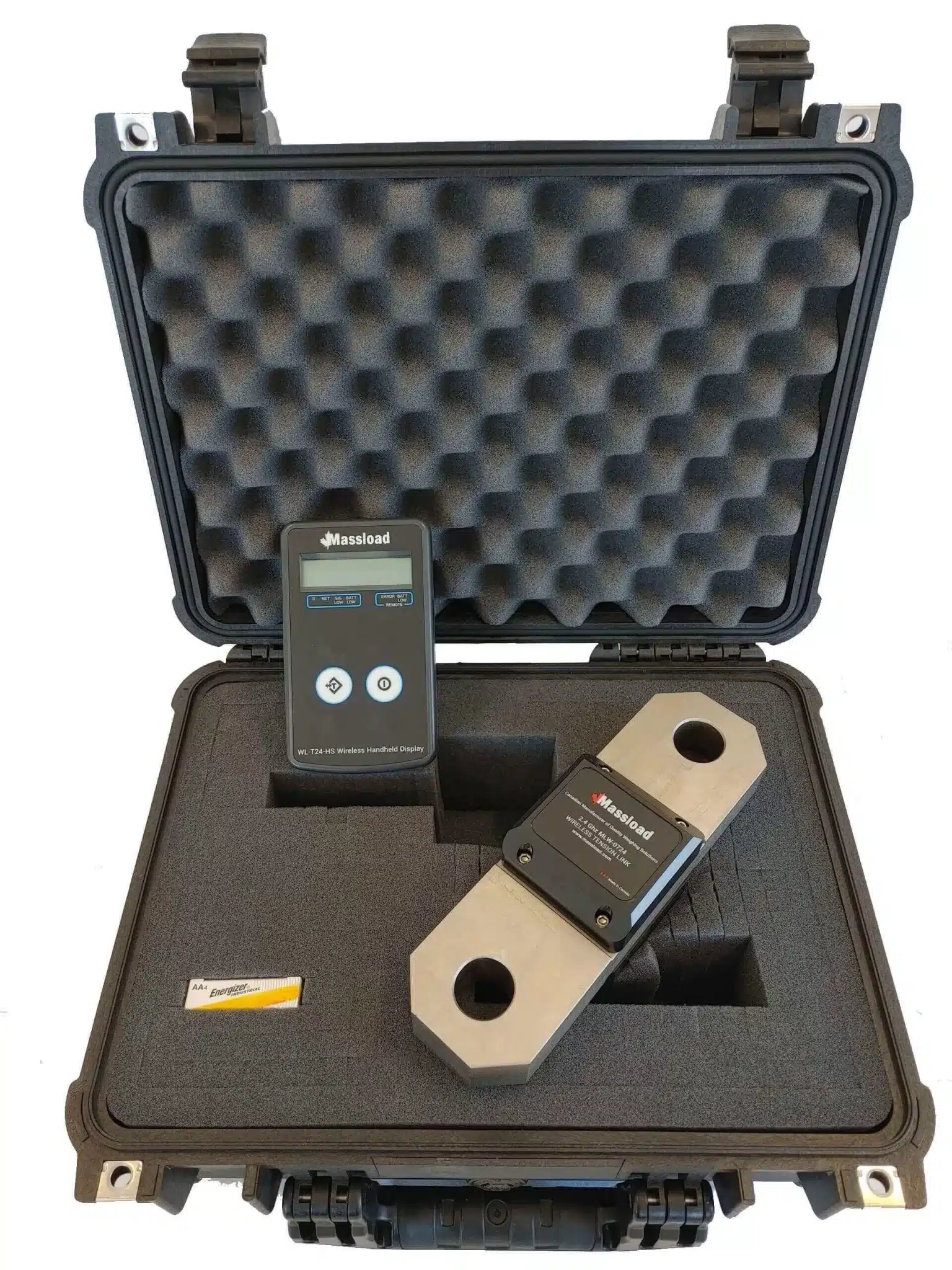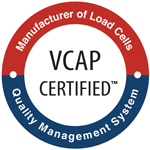 July 24, 2023
July 24, 2023
The weighing industry uses various load cells to fit different application needs and requirements. Tension load cells are strain gauge-type load cells that measure pulling or tension forces, perfect for crane and hoist weight monitoring and rigging applications. Some tension link load cells have bi-directional sensitivity, allowing for compression force measuring capabilities.
What are Tension Load Cells?
Tension load cells are devices that measure force or weight by detecting the tension (pulling) on a load. Used in lifting and hoisting applications, they ensure safety and stability by measuring the forces on cranes, hoists and other heavy-duty equipment. Tension load cells are used in industries such as construction, mining, shipping and entertainment.
Features of Tension Link Load Cells
When choosing a tension load cell for lifting and line tension applications, consider the requirements and conditions of the application.
Tension Type Load Cells
Different tension link load cells perform better for specific applications, depending on load capacity, headroom and other design factors. Here are some options:
- Tension Links: These load cells form a link between the hook and the measurement subject and are installed below the hook of a crane. Tension links reduce headroom by 1-2 feet due to their size and shackles on each end. Low-profile tension links partially compensate for this.
- S-type Load Cells: These perform similar to tension links and are more compact, perfect for applications where headroom is an issue. However, they are limited to smaller capacities, up to 10,000-20,000 lbs. S-type load cells have an upper and lower threaded hole to accommodate mounting eye bolts for aligning loads to the central axis.
- Load Shackles: When headroom is critical and a dead end is not available, load shackles allow for the installation of a load monitoring pin (load pin) for force measurement. These are best for medium to heavy weighing operations and affect headroom by the least amount.
The Key Differences Between Tension Link, S-Type and Load Shackles
Understanding the differences between tension link load cells, S-type load cells and load shackles is key to choosing the right solution for your application. Here’s a comparison of their features:
- Tension Link Load Cells: Best for heavy-duty applications where maximum load capacities are required. They are used in cranes, hoists and other lifting equipment and excel in applications where the load or cable might be angled, such as vehicle recovery or non-vertical lifts.
- S-Type Load Cells: More compact than tension link load cells and ideal for smaller applications where space is limited. They offer high precision but are limited to lower load capacities.
- Load Shackles: Load shackles excel in situations where there is limited headroom or when a dead end is not available. They are used in medium to heavy-duty weighing operations and can be combined with a load pin for force measurement. Load shackles are also ideal for measuring heavy-duty vertical lifts but will not provide the same consistent results if the load isn’t always vertical.
How to Choose the Right Tension Load Cell for Your Application
Choosing the correct tension load cell is critical for safe and accurate lifting, hoisting and line tension monitoring. Tension-specific applications require careful evaluation of load direction, connection points and real-world conditions. Here are the key factors to consider:
- Tension Load Capacity: Make sure the load cell is rated for the maximum tensile force your system will experience, not just the average load. Consider dynamic loading, shock loads and regulatory safety factors (often 150–200% of the working load)
- Headroom Limitations: Some tension load cells, like tension links, add several inches of vertical height. If space is limited, S-type or low-profile tension links may be more suitable. Always check the overall assembly height after shackles and rigging are added.
- Environmental Conditions: Tension load cells are often used outdoors or in rugged industrial environments. Select models with corrosion-resistant materials (e.g., stainless steel), sealed electronics and appropriate IP ratings (IP67 or higher) for moisture, salt spray or dust exposure.
- Alignment and Load Path: Tension load cells must be installed in-line with the force to ensure accurate readings. Consider if your setup allows for straight-line loading and if shackles, clevises or eye bolts will help maintain proper alignment.
- Accuracy and Signal Stability: Choose a load cell with the precision you need for your application, especially important when monitoring small weight changes or enforcing safety thresholds. Look for models with built-in temperature compensation and stable signal outputs for dynamic environments.
- Installation and Connectivity: Ensure the tension load cell fits into your existing system. That includes mechanical fit (threaded holes, shackle compatibility) and electrical compatibility (output type, wireless options or onboard displays). Clamp-on sensors can simplify installation when system modifications aren’t possible.
Environmental Considerations of Tension Type Load Cells
Environmental factors significantly impact load cell performance. To ensure reliability and longevity, the following must be considered when selecting tension link load cells:
Corrosion and IP Ratings
Moisture and chemical exposure can cause corrosion which can affect the load cell’s accuracy and durability. Choose load cells with appropriate IP ratings (e.g., IP67 or higher) to protect against water ingress and corrosion, especially in outdoor environments.
Temperature and Vibration
Extreme temperatures can affect the resistive elements of load cells and the strength of their internal components. Load cells should be chosen based on their compensation temperature range and operating temperature range. Vibration from industrial machinery or seismic activity can cause inaccurate readings if not accounted for during installation.
Outdoor vs. Indoor Use
Load cells used in outdoor applications such as crane operations in ports or construction sites must be designed to withstand environmental challenges such as weather, chemicals and physical wear. For indoor environments, standard load cells may be sufficient as long as they are shielded from extreme conditions. Massload designs its load cells with tough environments in mind. Each one is carefully built and tested to handle the real-world wear and tear of outdoor jobs, so you can count on them to perform reliably day after day.
Industry Applications
Tension link load cells are used in various industries for different applications:
- Construction: Tower cranes, lifts and other equipment use tension link load cells to monitor the weight being lifted, to ensure the crane’s load capacity is not exceeded and prevent accidents.
- Shipping/Ports: Container hoists use tension link load cells to weigh containers and monitor load distribution to ensure safe handling during loading and unloading.
- Mining and Oil: Heavy-duty rigging used in the mining and oil industries must be able to measure tension forces accurately, especially when handling big equipment or heavy loads in harsh environments.
- Entertainment: Stage rigging and tension safety applications in the entertainment industry require precise load measurement to ensure stage equipment, lights and other suspended objects are safely supported.
Contact Massload Technologies for a Tension Link Load Cell Solution
Not sure which tension link load cell is right for your application? Request a quote for more information on tension-type load cells and their features or if you need help finding a tension-type solution for your needs. Can’t find a tension link load cell that fits your challenge? Request a quote for a custom tension load cell solution designed and engineered by Massload Technologies, a force measurement expert since 1981.


